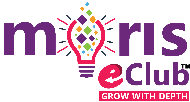-
Campaign vision & roadmap: Define the overarching campaign direction and break it into clear phases, milestones, and deliverables.
-
Messaging framework: Translate political objectives into concise message architectures that guide speeches, press notes, and digital content.
-
Issue prioritization: Rank and revisit priority issues using research inputs and ground feedback to keep the agenda relevant.
-
Narrative alignment across channels: Ensure one coherent storyline across on-ground events, media appearances, and digital platforms.
-
Stakeholder mapping & alliance counsel: Advise on coalitions, outreach, and partnerships; assess risks and benefits before commitments.
-
Media strategy & placements: Shape story angles, oversee key op-eds and statements, and coordinate with media teams on timing and framing.
-
Digital coordination: Work with digital leads so online campaigns mirror strategic messaging and respond to audience signals.
-
Crisis communication: Lead rapid response planning, enforce message discipline, and coordinate with legal and media counterparts.
-
Research integration: Commission and interpret polls, focus groups, and field reports; convert findings into actionable adjustments.
-
Competitive and sentiment tracking: Monitor rival moves, public mood, and coverage trends; brief clients and teams with timely insights.
-
Field integration: Equip regional teams with localized talking points and ensure ground activities reflect core narratives.
-
Cross-functional liaison: Maintain alignment among content, design, media, digital, and field workstreams; resolve conflicts quickly.
-
Client advisory & reporting: Present strategic options with rationale, capture feedback, and translate decisions into execution plans.
-
Scenario planning & contingencies: Model alternate paths for shifting contexts and prepare playbooks for high-impact moments.
-
Performance tracking & optimization: Set communication KPIs, review progress at defined intervals, recommend pivots, and document learnings.
Career With Us
Book Appointment
+91 8000-334444
Logo
Login
-
Solutions
Solutions
-
Digital Doctors
Who Are The Digital Doctors Real help. No loud claims. Founding Values Behind Digital Doctors Know where it all started Meaning Behind The Split Coat Identity marked with bold clarity How Digital Doctors Solve Problems Precise steps with honest clarity Solutions Prescribed By Digital Doctors Every fix carries real reason How To Become Digital Doctor Follow truth not trend lines

- PR Solutions
-
Digital Solutions
3-in-1-Profit Path Campaign Achieve your business goals. The Magic 21 Deliverables Review campaign specific outcomes. Next-Gen SEO Future-proof your online presence. Voice Search Readiness Optimize for audio queries. Traditional SEO Improve your website ranking. Generate New Leads Expand your customer base.

-
Social Media Solutions
3 in 1 Company Success Suite Triple your success with 3 in 1 power suite Social Media Management Right Strategies, Execution & Results Social Media Advertising Promote, Inspire, Reach & Emerge Linkedin Management Build Your Credibility & Reach The Right People. Facebook Management Not Just An Activity, But An Investment. Twitter Management Define Your Self & Thoughts Rightly

-
Celebrity & Influencer Solutions
celebrity management All Celebrity Management activities under one roof.
Single-point connect for Celebrity Management. influencers management Managing Influencers for diverse audiences. celebrity endorsements Get the celebrity your brand endorsement needs. influencer marketing Increase brand value through Influencer Marketing. learn more Know more on Celebrity/Influencer Marketing benefits.
-
Performance Marketing Solutions
influencer marketing Increase brand value through Influencer Marketing. lead generation campaigns Get Qualified Leads – Enjoy the difference. social media ad campaign Campaigns that increase sales and customer retention. brand awareness campaign Generate increased interactions, boost customer loyalty. Decision Makers Get connected to the decision makers.

-
Complete SEO Solutions
Advanced Search Algorithms Stay ahead in search. Speech Search Optimization Optimize for audio queries. Core SEO Management Improve your website ranking. On-Page Optimization Enhance your content visibility. Off-Page Authority Build your brand presence. Technical SEO Audit Ensure site health performance. Local Business Visibility Attract nearby customers.
.png?v=1676960503)
- Help
-
Digital Doctors
-
Who We Serve
Who We Serve
- Who We Are
- Self Help
- Partner Program
















































